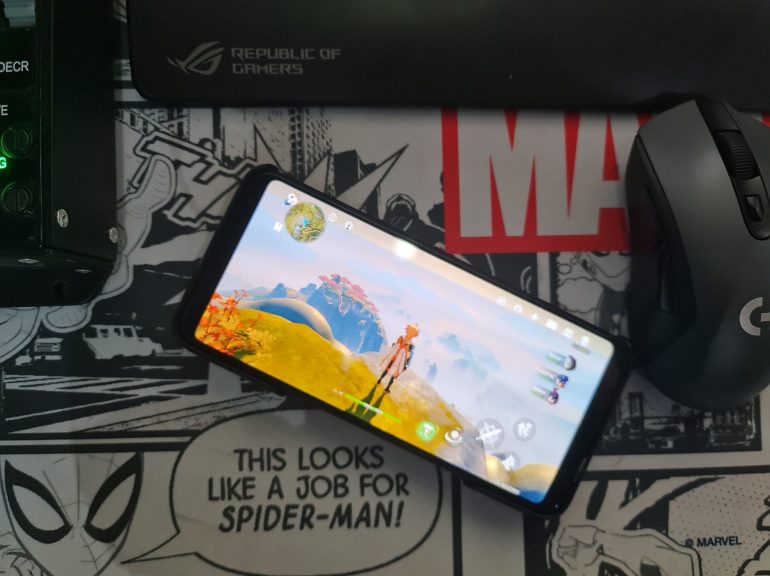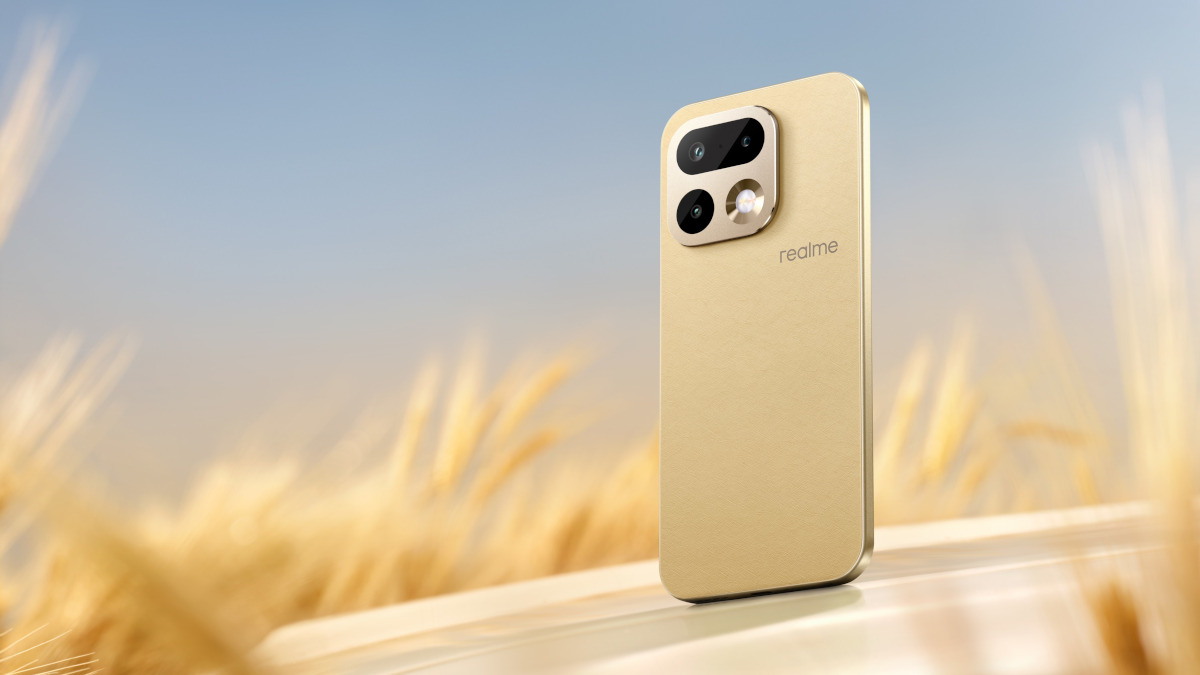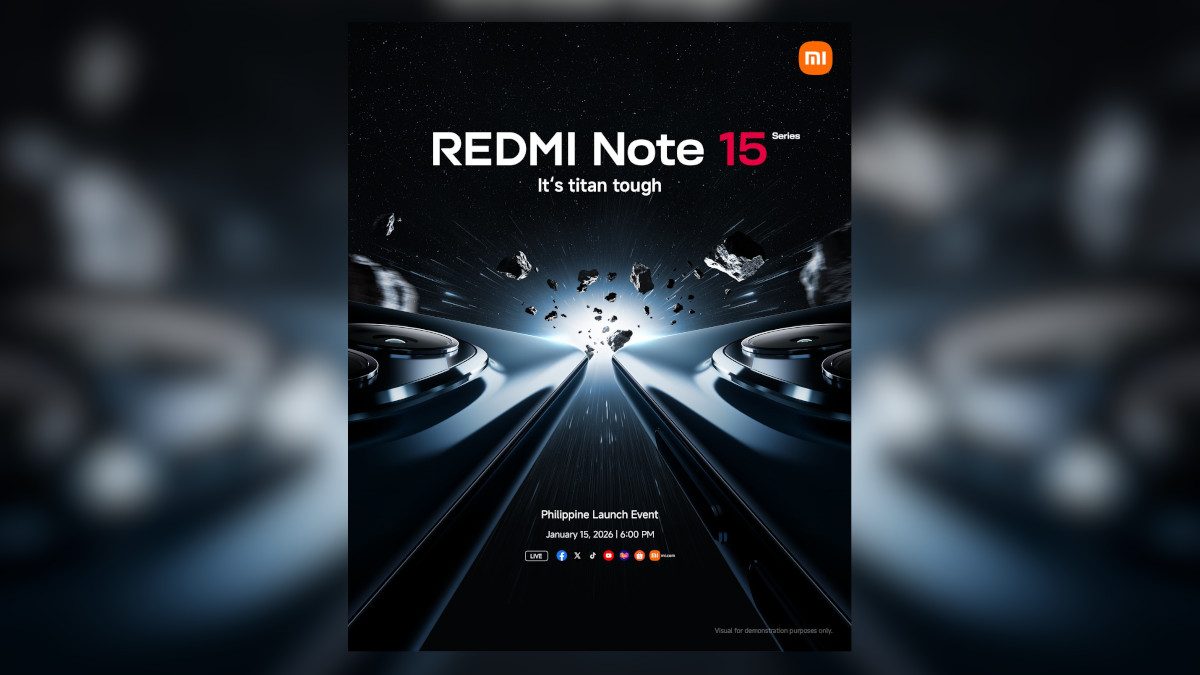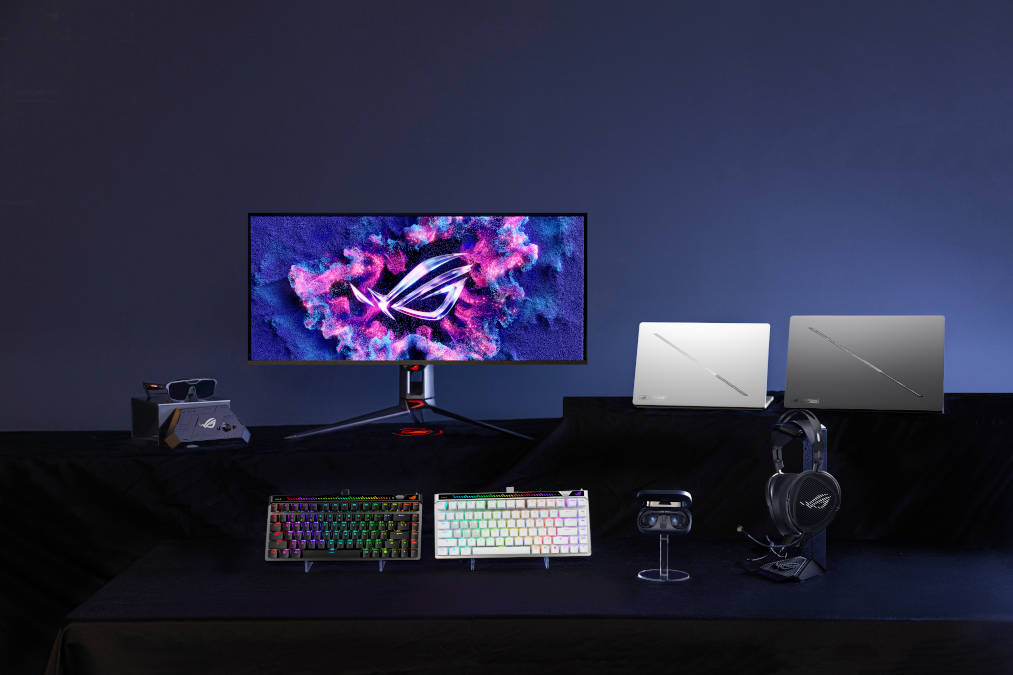ASUS ROG Phone 3 vs Samsung Galaxy Note20 Ultra: Game Benchmarks
It’s a standard requirement for flagship smartphones to be able to play triple-A titles at decent frame rates. 2 smartphones we recently reviewed fall in this category, and having spent quite a number of months to play my favorite games with these devices, I can definitely say that one’s really made for gaming and another one is for productivity.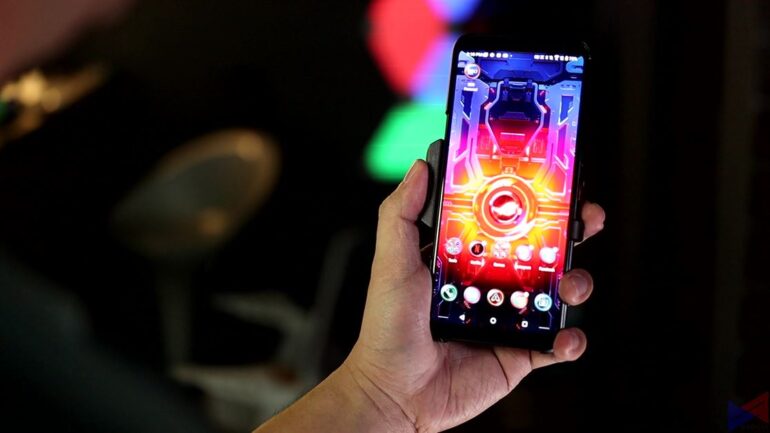
The ASUS ROG Phone 3 is undoubtedly one of the best gaming smartphones announced this year. The Samsung Galaxy Note20, while it doesn’t look it can let you play games, can actually decently crank itself up to let you enjoy titles like Genshin Impact and Call of Duty Mobile.
 In this article, I’m going to show empirical results of over 20 gameplay tests using our review methodology and provide a drill-down of what I think about the 2 devices from a reviewer’s and gamer’s perspective.
In this article, I’m going to show empirical results of over 20 gameplay tests using our review methodology and provide a drill-down of what I think about the 2 devices from a reviewer’s and gamer’s perspective.
First, let’s have a breakdown of the specifications of the phones.
Specs Breakdown
| ROG Phone 3 | Galaxy Note20 Ultra | |
| Processor | 3.1GHz Snapdragon 865 Plus (5G) | Octa-core (2×2.73 GHz Mongoose M5 & 2×2.50 GHz Cortex-A76 & 4×2.0 GHz Cortex-A55) Exynos 990 |
| GPU | Adreno 650 | Mali-G77 MP11 |
| OS | Android 10 with new ROG UI | OneUI 2.5 |
| Display | 6.59″ 2340 x 1080, 144Hz / 1ms | 6.9″ edge Quad HD+ Dynamic |
| AMOLED 10-Bit HDR | AMOLED 2X Infinity-O Display (3088×1440), 496 ppi | |
| Dimensions | 171 x 78 x 9.85mm | 164.8 x 77.2 x 8.1mm |
| Weight | 240g | 208g |
| Battery | 6,000mAh | 4500mAh |
| RAM | 16GB LPDDR5 | 16GB LPDDR5 |
| Storage | 512GB UFS 3.1 | 256GB UFS 3.0 |
| Sensors | In-Display Fingerprint Sensor | In-Display Fingerprint Sensor |
| Face Recognition | Face Recognition | |
| Accelerator | Accelerator | |
| E-Compass | E-Compass | |
| Gyroscope | Gyroscope | |
| Proximity Sensor | Proximity Sensor | |
| Hall Sensor | Hall Sensor | |
| Ambient Light Sensor | Ambient Light Sensor | |
| Ultrasonic Sensors (AirTrigger 3/Grip Press) | ||
| Wireless | WiFi 6 (802.11a/b/g/n/ac/ax 2×2 MIMO) | WiFi 6 (802.11a/b/g/n/ac/ax 2×2 MIMO) |
| Bluetooth 5.1 (BR/EDR+LE), Qualcomm aptX Adaptive | Bluetooth 5.1 (BR/EDR+LE), Qualcomm aptX Adaptive | |
| WiFi Direct | WiFi Direct | |
| NFC | NFC | |
| I/O | Side: Custom USB-C | Supports USB 3.2 |
| Supports USB 3.1 Gen2 / DisplayPort 1.4 (4K UHD) | Fast charging 25W | |
| Fast-Charging (PD 3.0, 30W) | USB Power Delivery 3.0 | |
| 30W ROG HyperCharge Direct Charging | Fast Qi/PMA wireless charging 15W | |
| Bottom: USB-C | Reverse wireless charging 4.5W | |
| USB 2.0/Fast-Charging (PD 3.0, 30W)/Direct Charging | ||
| Front Camera | 24MP | 10 MP, f/2.2, 26mm (wide) |
| Rear Camera | 64MP Sony IMX686 (Main) | 108 MP, f/1.8, 26mm (wide) |
| 13MP 125° (Ultra-wide) | 2 MP, f/2.2, 120˚, 13mm (ultrawide) | |
| 5MP (Macro) | 12 MP, f/3.0, 120mm (periscope telephoto) |
Average FPS (ROG Phone 3 vs Note20 Ultra)
When playing games, FPS counts. Whether you’re playing an eSports or a Gacha-RPG title, games are best enjoyed when you’re getting smooth and playable FPS. The standard average is to at least play games at 30fps. Anything lower than the latter falls under “acceptable” standards.
 However, we’re talking about mid-range smartphones in this comparison. We have 2 of the fastest smartphones in the market right now, and I thought of running several gameplay tests of titles that some of you may have been playing.
However, we’re talking about mid-range smartphones in this comparison. We have 2 of the fastest smartphones in the market right now, and I thought of running several gameplay tests of titles that some of you may have been playing.
ASUS ROG Phone 3 is obviously the smartphone you need if you want to play games smoothly. It isn’t exactly the best in terms of photography and video, but that’s a different subject to talk about soon.
Galaxy Note20 Ultra falls short in reaching the FPS I wanted when playing my favorite games. This would have been a different scenario had Samsung brought the Snapdragon variant to the Philippines. I am not dismissing it to be a smartphone that can let you play games though. I am not complaining, but it’s best to express my opinion that if you’re after gaming, ROG Phone 3 is the best and cheaper option.
Average CPU (ROG Phone 3 vs Note20 Ultra)
Some of the games I played require multi-core processors. Exynos 990 managed to use an ample amount of frequency (represented by AppCPU percentage usage) to play games at maximum settings. Since it uses lower frequency, at least for the most part, it does not heat up the phone so much and does not use a lot of battery juice. This happens, however, at the expense of FPS and gameplay smoothness.
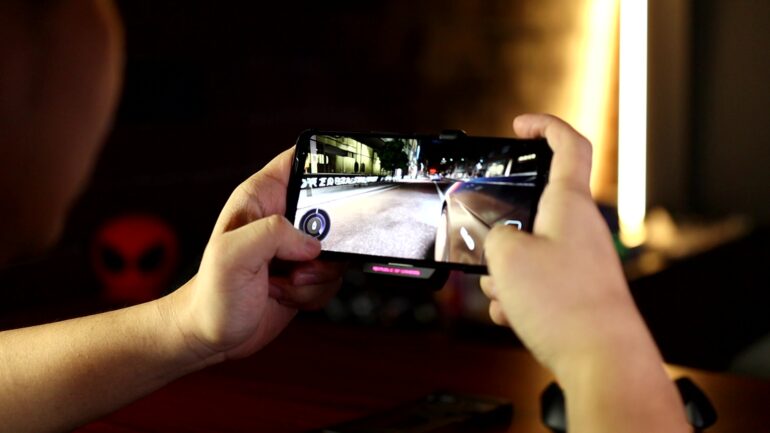 ROG Phone 3 on the other hand cranks everything up to utilize as much as it can (with X Mode enabled) to give users a smooth gameplay experience. It succeeds to do so at the expense of thermals.
ROG Phone 3 on the other hand cranks everything up to utilize as much as it can (with X Mode enabled) to give users a smooth gameplay experience. It succeeds to do so at the expense of thermals.
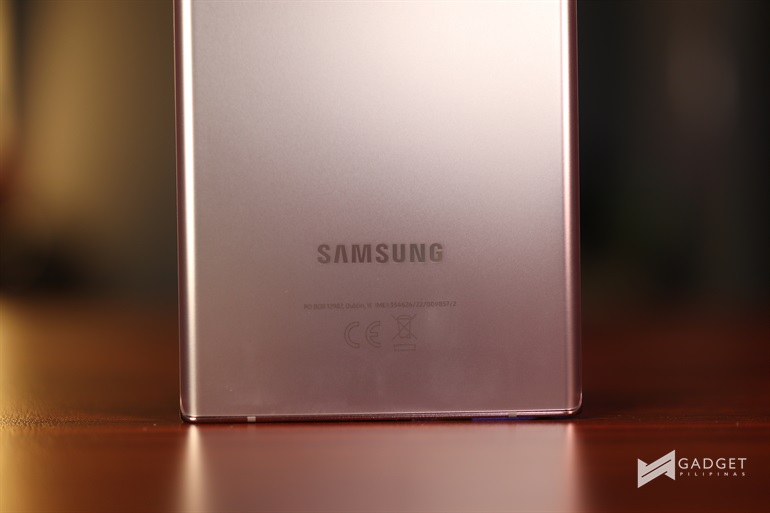 Different strokes for different folks. Some won’t mind lower FPS and less smooth gameplay on Note20 an issue because they get more battery mileage and convenience. Some, on the other hand, will not mind thermals and battery life for as long as they’re playing their favorite games they way the developers intended the game to be played, i.e, smooth.
Different strokes for different folks. Some won’t mind lower FPS and less smooth gameplay on Note20 an issue because they get more battery mileage and convenience. Some, on the other hand, will not mind thermals and battery life for as long as they’re playing their favorite games they way the developers intended the game to be played, i.e, smooth.
Average Memory (ROG Phone 3 vs Note20 Ultra)
Genshin Impact
I thought of putting up a special section for Genshin Impact because it is currently one of the hottest games in the market right now. It is also, by far, the most ambitious Gacha game with its cross-platform support (except PS4) and future features.
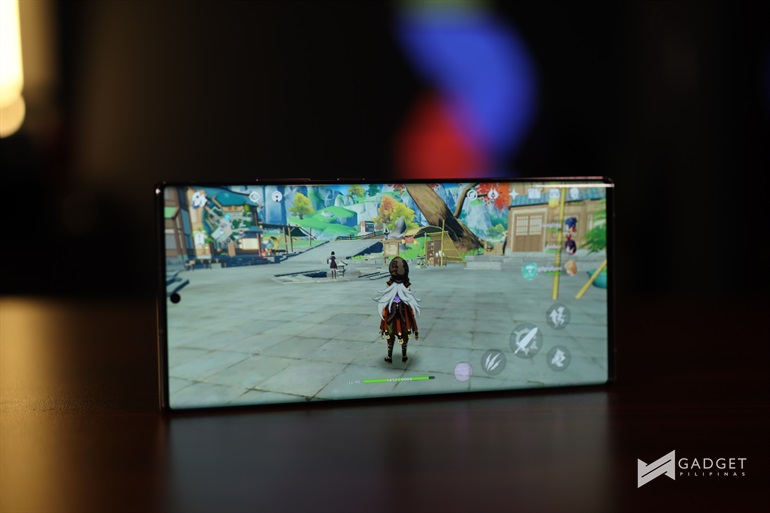 As an open-world Gacha game, Genshin Impact posts a significant challenge to both phone manufacturers and consumers. While the game is playable on both devices, it demands a lot of hardware resources for it to run at 60fps. The ROG Phone 3, with X Mode On, struggled to run the game at 50fps. In my multiple tests, the average FPS at the highest settings is 49.28 on ROG Phone 3 and 29.14 on Note20 Ultra. Wild!
As an open-world Gacha game, Genshin Impact posts a significant challenge to both phone manufacturers and consumers. While the game is playable on both devices, it demands a lot of hardware resources for it to run at 60fps. The ROG Phone 3, with X Mode On, struggled to run the game at 50fps. In my multiple tests, the average FPS at the highest settings is 49.28 on ROG Phone 3 and 29.14 on Note20 Ultra. Wild!
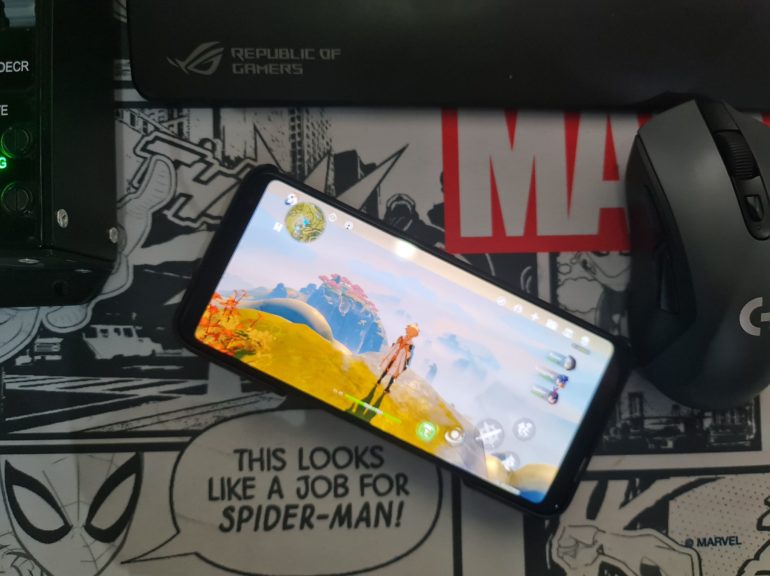 ROG Phone 3 (X Mode On) vs Note20 Ultra
ROG Phone 3 (X Mode On) vs Note20 Ultra
ROG Phone 3 (X Mode Off) vs Note20 Ultra
What now?
There is no doubt that both devices are great for gaming. While there is no intention of dismissing one for gaming, the point of this article is to help consumers understand how each device can handle specific games. ROG Phone 3 is clearly the best for gaming because it’s made for gaming. Galaxy Note20 Ultra isn’t as good as the former for gaming, but it definitely can let you play games at decent FPS and performance. Its competitive edge isn’t gaming because it wasn’t made specifically for it. It’s an all-rounder, albeit having a premium price tag.
At the end of the day, as the consumer, you have to clarify your intentions of buying a flagship smartphone. Is it for gaming? Is it for photography? Since you can’t buy one phone per each need (and I don’t suggest that you do), you have to weigh your options and pick the right one. This isn’t about “collecting and selecting”; it’s about “reading, thinking and selecting”.
Giancarlo Viterbo is a Filipino Technology Journalist, blogger and Editor of gadgetpilipinas.net, He is also a Geek, Dad and a Husband. He knows a lot about washing the dishes, doing some errands and following instructions from his boss on his day job. Follow him on twitter: @gianviterbo and @gadgetpilipinas.

